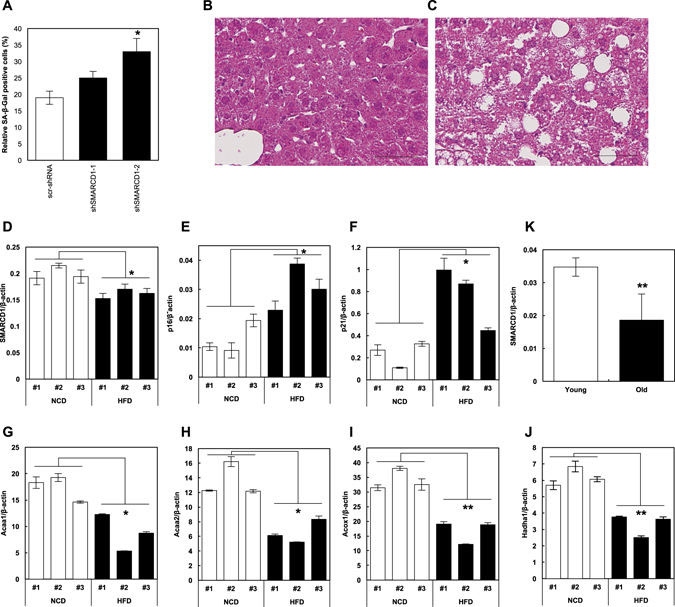SMARCD1は肝細胞老化に付随する脂質蓄積を制御する
SMARCD1 regulates senescence-associated lipid accumulation in hepatocytes
2017年8月30日 npj Aging 3, Article number:11 (2017) doi:10.1038/s41514-017-0011-1
細胞の老化:脂質蓄積の鍵となる分子SMARCD1

九州大学の片倉喜範を中心とする研究チームは、脂肪肝発生の分子機序を解明しようと試み、筆者らの同定した老化関連遺伝子の1つSMARCD1に着目して、それが肝細胞老化および脂質蓄積において重要な役割を果たしていることを明らかにした。SMARCD1は、SWI/SNFクロマチンリモデリング複合体ファミリーのタンパク質であり、クロマチン構造を変化させることによって標的遺伝子の転写を調節することが知られている。今回得られた結果は、高脂肪食などの食事の乱れがSMARCD1の発現異常を引き起こし、それが肝細胞老化および脂質蓄積を引き起こすことを示唆しており、生活習慣病の予防に関してSMARCD1が秘める潜在的な役割について報告された。
Cellular senescence: SMARCD1, a key molecule in lipid accumulation
A team led by Yoshinori Katakura at Kyushu University tried to clarify the molecular mechanisms of pathogenesis of fatty liver, focused on SMARCD1, one of the identified senescence-associated genes, and revealed its pivotal roles in cellular senescence induction and lipid accumulation in hepatocytes. SMARCD1 is a member of the SWI/SNF chromatin remodeling complex family and known to regulate the transcription of target genes through the alteration of chromatin structure. The results obtained here suggest that dietary imbalance such as high-fat diet impaires expression of SMARCD1, which triggers cellular senescence and lipid accumulation in hepatocytes, indicating a potential role of SMARCD1 in the prevention of lifestyle-related diseases.

